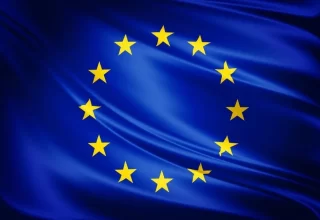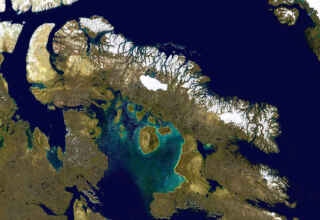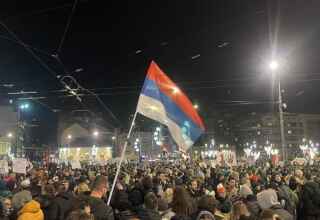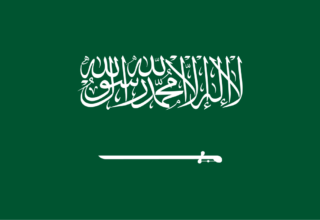As Pakistan’s Prime Minister Imran Khan (2021) wrote in a recent Washington Post editorial his country has suffered more than any other one in the name of the war on terrorism in Afghanistan, and hence, would be more interested than any other actor to see a stable government in Kabul. He is not shy about whom Islamabad will collaborate with: “In the past, Pakistan made a mistake by choosing between warring Afghan parties (…) and will work with any government that enjoys the confidence of the Afghan people” (Khan, 2021).
Pakistan usually flies under the radar of many western observers. However, due to its strategic geopolitical location with access to the sea and its borders with the regional powerhouses of India and Iran as well as its mostly mountainous and porous border with Afghanistan, the country was an important US ally during the Cold War (Williamson, 1999). Western support continued throughout the 1990s until the G7 member states imposed harsh sanctions on Pakistan after it had carried out nuclear tests in May 1998. These had a crippling effect on the country’s economy, but were lifted shortly after (ibid.). To its northern neighbor Afghanistan exist strong ethnical relations. The dominant ethnicity in Afghanistan are the Pashtun (more than 15 million, 42% of the total population) who live mostly in the southern half of the country (CIA, 2021a). In Pakistan’s north-west more than 43 million Pashtuns live, roughly a fifth of its population (CIA, 2021b). Hence, Pakistan has long been interested for strategic and security reasons to gain more influence in Afghanistan. Now, more than ever, Islamabad is closer to that objective than ever before.
Pakistan’s duplicitous game with the West
In the last two decades, since the invasion of Afghanistan in 2001, Pakistan has been showcasing an ambiguous attitude toward the US and its NATO allies. Some three million Pashtuns fled from Afghanistan to Pakistan, when the Soviets invaded the former and stayed there for an unsuccessful, decade-long war (Lieven, 2021). The Pakistani refugee camps became breeding grounds for the mujahedin and later for the Taliban, who received much aid from Pakistani Pashtuns during their resistance fight against the US after 2001 (ibid.). Severe US pressures on Islamabad’s government led to an attempted crackdown on anti-American jihadists hiding in the border regions of Pakistan; however, the result were Pashtun Islamist revolts leading to the founding of Tehreek-e-Taliban Pakistan and a civil war (ibid.).
While western actors participated in the last few years in peace conferences in Qatar, in Pakistan the Afghan Taliban – hosted and equipped by the Pakistani army – collected donations in the north-western province of Khyber Pakhtunkwa and in Baluchistan. Whoever refused, was summarily executed; and according to eyewitnesses members of the Pakistani military-sponsored Jaish-e-Mohammed (JeM) also helped with collections and recruitment of fighters for the liberation of Afghanistan (Marino, 2021b). Apparently, at the Balakot camp as well as other JeM training camps in Pakistan new recruits to the Afghan Taliban were drafted, and suicide bombers for other terrorist networks in the region. According to some sources, the Taliban also raise funds in an organized manner in the provinces of Punjab and Sindh in the disputed Kashmir region. It also appears that the JeM has a base in Quetta, close to the Afghan border, as a base for operations in the adjacent country. In Afghanistan, they have established bases in Kandahar and in the north of Helmand province, and the JeM cadres are currently active in the regions of Afghanistan along the Pakistani border (ibid.).
During the last decade, under the aegis of the Inter-Services Intelligence (ISI – Pakistani military intelligence) in Khyber Pakhtunkwa, a north-western province of Pakistan, a new group was created: the Taliban-Khattak. It is trained by members of the JeM, the Haqqani and the Taliban themselves to be sent to Afghanistan against government troops. These fringes are destined not only to fight the regular troops, but also other jihadist groups in case of need, such as the ‘regular’ Taliban who dealt in Qatar. The ‘regular’ Taliban are the faction who directed the talks in Qatar, according to special envoy Zalmay Khalilzad, and “support the peace process” unlike Isis-K (Islamic State in Khorasan) which opposes it (Marino, 2021b).
In 2017, Isis-K split into two factions: one led by Ustad Moawya and another led by Aslam Faroqqi. One of the reasons for the split was the belief that Faroqqi and his men were mainly Pakistani and managed directly by the ISI through financial support and given refuge in the tribal areas of Pakistan. Faroqqi is well-known to intelligence agencies. The Afghanistan Department of National Security claims he has links with Lashkar-e-Toiba, Tehrik-e-Taliban Pakistan, the Taliban and the Haqqani network (a terrorist organization led by Sirajuddin Haqqani). When Faroqqi was arrested by the Afghans after a deadly attack on a Sikh temple, Islamabad rushed to demand his extradition, accusing him of alleged plots against Pakistani targets. But the real purpose was to get him safely to Pakistan. According to the Afghanistan Department of National Security, Isis-K is a brand created by the Islamabad services. It carries out all those tasks that the Taliban can no longer openly do due to the peace talks, but which are essential for Islamabad to maintain control of the region. And to delegitimize the previous Afghan government, recognized by the West, with the aim of installing a welcome executive in Islamabad: neither pro-Indian nor pro-American (Marino, 2021b).
A government – according to Imran Khan – “legitimately elected” by the Afghan people, but controlled with arms by the winning Taliban. On the other hand, images of what analyst Bill Roggio ironically called “peace training camps” have been around the web for months. As well as the statements of the Taliban spokesman Zabiullah Mujahid, who called the soldiers and police of the Kabul government “a bunch of criminals and mercenaries” who will be executed until “they repent and accept the Islamic Emirate” (Marino, 2021b).
The main condition (practically the only) required for the withdrawal of US troops from Afghanistan was that the Taliban cut ties with al-Qaeda and ensure that the plateau was no longer used for international attacks. However, as stated by Edmund Fitton-Brown, coordinator of the United Nations monitoring team: “The Taliban speak regularly and at a high level with al-Qaeda and declare that they will always honor their historical ties” (Marino, 2021b). Among the Americans asking for a military base and the Chinese who bribe generals and politicians, Pakistan is confirmed as a key player on the Central Asian chessboard, where Islamabad has only one effective weapon: terrorists. Managing international terrorism has secured dividends for the past twenty years and will continue to do so in the future. Any declarations to the contrary are a smokescreen to bestow a semblance of dignity to the withdrawal of NATO troops. A retreat consulted and agreed upon with members of terrorist organizations, given that the government in Kabul was not involved (Marino, 2021b).
Celebrations their victory, the Taliban have declared the war over and invited the population not to be afraid. Everyone shall be safe as long as they adhere to the recently declared Islamic Emirate. From Pakistan congratulatory messages arrived; Islamabad has given logistical and military support to the Taliban for the twenty years of the US and NATO mission in Afghanistan. Arms and helicopters provided by Washington were used to bomb Baluchistan except for the city of Quetta, close to the Afghan border, where Mullah Omar lived. Former Prime Minister Musharraf wrote in his autobiography that the government would extradite the presumed numbers two and three of Al-Qaeda to the US, arrested in Peshawar, when they were in need of funds (as the US paid handsomely for every captured leader). Islamabad also played hosts for Mullah Baradar and Shura Quetta, a group composed of Taliban leaders in Pakistan, for many years waiting until they would become useful for future negotiations with Washington (Marino, 2021a).
Meanwhile, the ISI was training and weaponizing old and new Taliban militias with the help of the Haqqani, Jaish-i-Mohammed and Lashkar-e-Taiba. He made deals with the “bad guys” of Tehreek-e-Taliban Pakistan who – according to the military’s narrative – would be deployed against Islamabad. However, the Pakistani generals were denied by some members of the organization, who escaped from a couple of safe houses because they had not been given all the money agreed. Thus, while the New York Times cleared customs for a hired killer like Sirajuddin Haqqani by publishing on the front page an article in his name, Washington was providing legitimacy and international recognition to Abdul Ghani Baradar and the Taliban, maneuvered from Pakistan. At the same time removing legitimacy from the actually elected Afghan government in elections strongly desired by the Americans (Marino, 2021a).
Thus, the so-called “peace talks” in Qatar began and continued during the most violent offensive ever launched by the Taliban and while Kabul and other cities were targeted by suicide attacks against journalists, activists, doctors, politicians and civilians in general, and not against the military. While the Special Representative for the Reconciliation of Afghanistan of the State Department, Zalmay Khalilzad, tried every military action and every massacre to throw the blame on Isis-K or on alleged other “bad” Taliban, Islamabad made sure not only that no talks took place without the (un)official presence of its envoys. Also, to guarantee the Taliban further legitimacy making them receive from the Chinese and Russians (Marino, 2021a).
Pakistan’s new champion: China
China has already secured – before the final offensive began that led to the fall of Kabul – privileged agreements with the protégés of Pakistan (Yang, 2021). The way to extend the China-Pakistan Economic Corridor as a crucial part of Beijing’s Belt and Road Initiative [ARTICLE LINK] is now open. It looks too late to threaten the Taliban with sanctions or not to recognize their government. Russia, China and Turkey as well as Pakistan may be ready to recognize Mullah Abdul Ghani Baradar, the newly declared President of Afghanistan, and do business with him (Marino, 2021b; Ummid, 2021).
Together with Pakistan, China is planning Afghanistan’s future. Beijing holds sway over Islamabad for two main reasons: the Pakistani generals dream of strategic depth and Beijing has is Belt and Road Initiative and the vital port of Gawadar in mind. In both cases, Afghanistan is of vital importance; above all, that neither India nor the US gain control there. China’s interest in Afghanistan lies, firstly, in its strategic significance for its transport routes and potential sources of energy – it is already one of the largest foreign investors in the country; and secondly, the Communist Party fears that political instability could reinforce the demands of Muslim Uyghur separatism in Xinjiang (Marino, 2021b). Beijing has been making agreements with Islamabad as well, so that the various groups created and managed by the ISI do not provide help, training or support to terrorist organizations who fight against the ethnic and religious cleansing of the Uyghurs in China. Ethnic profiling and widespread control of Uyghurs residing in Pakistan has been underway for some time. Chinese secret service agents interrogate, together with the local secret services, dissidents of any ethnicity who were picked up by the police and made to disappear (ibid.).
However, the growing cooperation with China has seen also setbacks. Last month, a terrorist attack on a bus killed nine Chinese engineers in the far north-east of Pakistan, in Gilgit Baltistan (Aamir, 2021). The angered Chinese regime postponed a Belt and Road meeting with Pakistani officials and temporarily halted its work on a $4 billion dam project in Pakistan (ibid.). The perpetrators remain unknown, especially since the Taliban had pledged not to target any Chinese nationals. Gilgit Baltistan is a region of Kashmir which is occupied by Pakistan. This area has witnessed a growing radicalization and the emergence of a previously unknown Islamic extremism due to policies from Islamabad: free hand to various jihadists and terrorists, violent suppression of Shiites, construction of fundamentalist Quran schools and forced recruitment of young men into extremist organizations (Marino, 2021b). Fears run high in Islamabad that the Uyghur issue could trouble the good relations with China. This is because a large number of Uyghur women married to Pakistani citizens have been arrested by the Chinese without apparent reasons (ibid.).
This incident, and also the recent blast targeting the Lahore residence of Mohammed Hafiz Saeed, the founder and leader of Lashkar-e-Taiba, which killed three – yet not the absent Saeed himself – could also be part of an established strategy (Al-Jazeera, 2021). A strategy that aims at portraying Pakistan as a victim of terrorism, which needs weapons and money to defend itself and defend the Chinese from the terrorists who threaten the new silk routes (Marino, 2021b).
Sanctions and arms embargos as a potential tool to influence Pakistan’s foreign policy
Pakistan’s financial situation has always been badly managed and has grown dependent on financial assistance from donor states and international financial institutions. For example, in 2019, Islamabad had to take a $6 billion loan agreement with the International Monetary Fund for the 22nd time since its independence in 1947 (Department of Foreign Affairs and Trade, 2021). In the past fiscal year (2019-20), Islamabad received $7.38 billion in foreign aid and foreign direct investment (FDI) from diverse sources which add up to 57% of its entire state budget of just under $13 billion (Link News, 2020). The US and China were the top investors, followed by the EU and the UK (ibid.). This means that Pakistan’s budget still depends for a good part on the West. America’s contribution of over $600 million is shared almost equally between financial humanitarian support and defense funding (Foreign Assistance, 2021). China provided a little less than $500 million in financial assistance to Pakistan, while its FDI flows provide 46% of Pakistan’s total FDI (Link News, 2020). On the other hand, the EU gives annually more than €150 million in financial aid plus separate financial support payments in special cases, like last year’s devastating floods (Commission, 2021a). Pakistan’s export still mostly go to the West (eight of its top twelve partners); the EU received 28% of Pakistan’s total exports dominated by its textile sector comprising 75% of all exports in that sector (Commission, 2021b). Its import comes mainly from only two states: China and the United Arab Emirates (24,8% and 12,6% respectively); besides the EU’s 14% share of imports, the US, the UK and Canada contribute another 8% (WITS, 2021).
In the past, Washington was Islamabad’s most important defense ally and arms provider. This is no longer the case as China has overtaken the US as Pakistan’s largest weapons supplier in 2017 (Malik & Ushtiaq, 2018). Earlier this year, Russia’s Foreign Minister Sergey Lavrov promised to provide more weaponry to Pakistan with the intention to also increase defense cooperation (Bhaumik, 2021). These developments are worrisome to India, which has been pointing out that Pakistan uses its foreign funds and arms to sponsor terrorism in India, but so far has failed to attract the international community’s attention (ibid.).
Pakistan has played a key role in the government of multi-ethnic Afghanistan in the last two decades and will continue to do so in the foreseeable future. If western countries are seriously interested in improving the lot of the Afghani population and prevent mass exoduses, aiming at conditioning Islamabad’s policies would be imperative. Considering the waning influence on Pakistan’s defense capabilities, military and economy, sanctions and arms embargos will not suffice. Instead, a more constructive collaboration with India will be required, which would fit into the EU’s declared strategy to increase its presence in the Indian Ocean.
Bibliography
Aamir, A. (2021, Jul 21). China pressures Pakistan after losing 9 engineers in bus attack. https://asia.nikkei.com/Spotlight/Belt-and-Road/China-pressures-Pakistan-after-losing-9-engineers-in-bus-attack
Al-Jazeera (2021, Jun 23). Deadly blast in Pakistan near residence of armed group founder. https://www.aljazeera.com/news/2021/6/23/pakistan-blast-hafiz-saeed-lahore-residence
Bhaumik, A. (2021, Apr 07). Russia pledges to provide more weapons to Pakistan, despite unease in India. https://www.deccanherald.com/international/russia-pledges-to-provide-more-weapons-to-pakistan-despite-unease-in-india-971616.html
CIA (2021a). The World Factbook – South Asia – Afghanistan. https://www.cia.gov/the-world-factbook/countries/afghanistan/
CIA (2021b). The World Factbook – South Asia – Pakistan. https://www.cia.gov/the-world-factbook/countries/pakistan/
Commission (2021a). International Partnerships – Pakistan. https://ec.europa.eu/international-partnerships/where-we-work/pakistan_en
Commission (2021b. Trade – Pakistan. https://ec.europa.eu/trade/policy/countries-and-regions/countries/pakistan/
Department of Foreign Affairs and Trade (2021). Pakistan country brief. https://www.dfat.gov.au/geo/pakistan/pakistan-country-brief
Foreign Assistance (2021, Jul 26). Pakistan. https://foreignassistance.gov/#Pakistan
Khan, I. (2021, Jun 21). Pakistan is ready to be a partner for peace in Afghanistan, but we will not host US bases. https://www.washingtonpost.com/opinions/2021/06/21/afghanistan-pakistan-imran-khan-peace-security-cooperation-us/+&cd=1&hl=en&ct=clnk&gl=es
Lieven, A. (2021, Aug 18). What Pakistan Stands to Gain From the Taliban Takeover of Afghanistan. https://time.com/6091251/afghanistan-taliban-takeover-pakistan/
Link News (2020, May 20). Pakistan gets $7.38 billion foreign aid from multiple sources during 10MFY20. https://mettisglobal.news/pakistan-gets-7-38-billion-foreign-aid-from-multiple-sources-during-10mfy20/
Malik, N. & Ishtiaq, M. (2018, Mar 13). China Outpaces US in Arms Supply to Pakistan. https://www.voanews.com/east-asia-pacific/china-outpaces-us-arms-supply-pakistan
Marino, F. (2021a, Jul 06). Pakistan wants to write the script for the future of Afghanistan. Jointly with China. https://www.limesonline.com/rubrica/afghanistan-taliban-al-qaida-ritiro-usa-pakistan-cina
Marino, F. (2021b, Aug 17). The relative victory of Pakistan in Afghanistan. https://www.limesonline.com/rubrica/afghanistan-pakistan-taliban-emirato-islamico-baradar-cina-usa
Ummid News Network (2021, Aug 16). Mullah Abdul Ghani Baradar declared Afghanistan’s new President. https://ummid.com/news/2021/august/15.08.2021/mullah-abdul-ghani-baradar-declared-afghanistans-new-president.html
Williamson (1999, Jan 01). Pakistan and the World Economy. https://www.piie.com/commentary/speeches-papers/pakistan-and-world-economy
WITS (2021). Pakistan trade balance, exports and imports by country 2019. https://wits.worldbank.org/CountryProfile/en/Country/PAK/Year/2019/TradeFlow/EXPIMP/Partner/by-country
Yang, J. (2021, Aug 19). China’s Political Calculations and Potential Options in Afghanistan. https://thediplomat.com/2021/08/chinas-political-calculations-and-potential-options-in-afghanistan/
By Andreas Rösl : The European Institute for International Law and International Relations.















